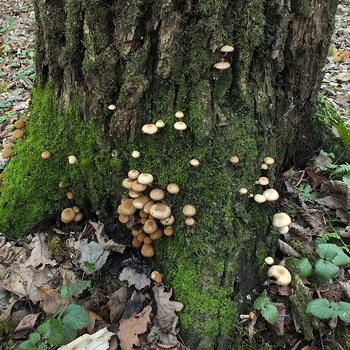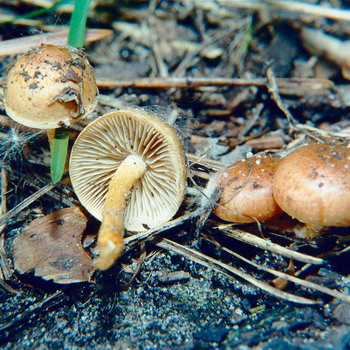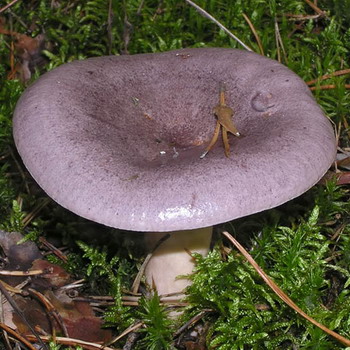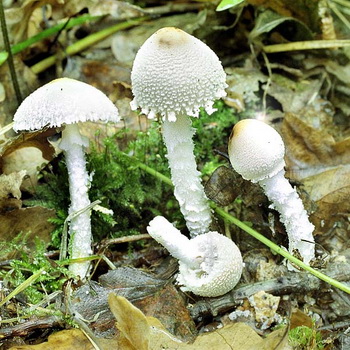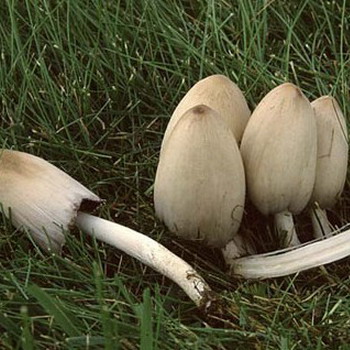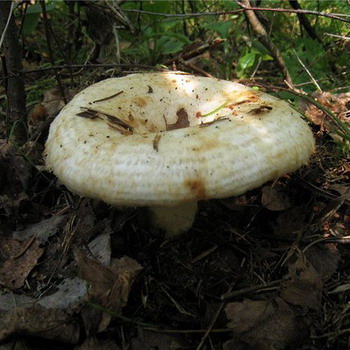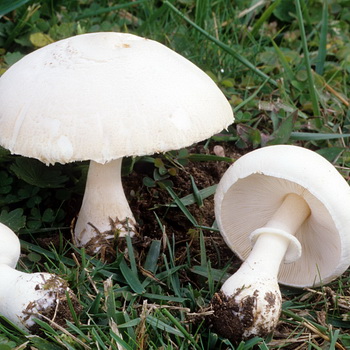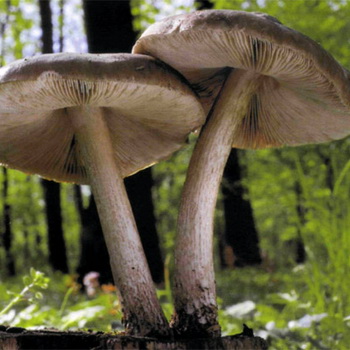Cystoderma
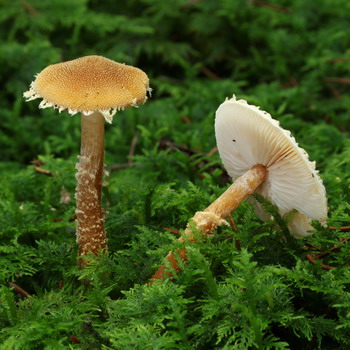
Amian cystoderm
Category: edible.
Hat (diameter 2-7 cm): red, brown or yellowish, with a central tubercle and often with the remains of the bedspread. In young mushrooms, it has the shape of a bell, with time it becomes almost flat or slightly convex, with wrinkles or small folds. Edges are usually bent to the inside.
Leg (height 3-10 cm): very smooth, white, tapers from bottom to top, has the shape of a cylinder. Usually without a ring from the bedspread.
Records: tightly attached to the leg.
In young mushrooms, ceps become creamy or light brown over time.
Pulp: very thin and fragile, usually pale yellow or white. On a cut or break, it smells of mold.
Doubles: are absent.
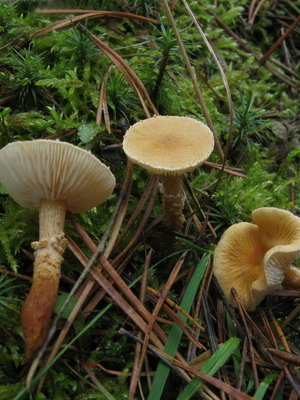
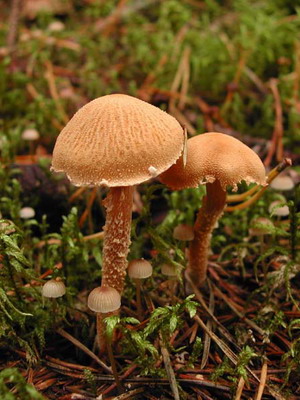
Amiant cystoderma grows from early August to mid-October in temperate northern hemisphere countries.
Where can I find: usually in coniferous forests, less often in mixed plantings or with ferns, in clearings or in parks.
Eating: not used, as it has extremely low palatability and an unpleasant odor.
Application in traditional medicine (data not confirmed and not passed clinical trials!): as a tool for the treatment and prevention of gastritis.
Oysterous cystoderma (Cystoderma carcharias)
Category: edible.
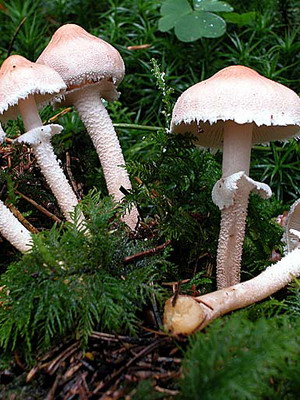
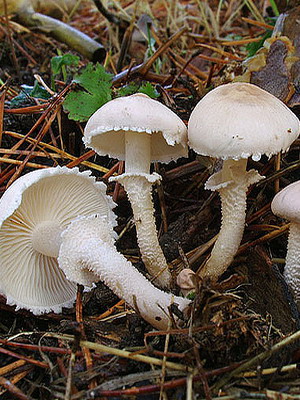
Hat (diameter 3-8 cm): usually gray, dirty yellow or pinkish, with a large central tubercle and fringed edges, which are usually significantly lighter than the center. In young mushrooms, it looks like a ball or cone, in others it is more open. Dry to the touch.
Leg (height 3-11 cm): very smooth, white, tapers from bottom to top, cylindrical in shape, with a central ring of gray or pinkish color.
Records: firmly grow to the leg. White mushrooms in young mushrooms darken with age.
Pulp: very fragile, white or pinkish in color.
The name cystoderm comes from the Greek “sharp”, “rough” or “jagged”.
Doubles: related species of small cystoderms, however, they are usually more yellow.
When growing: from mid-August to early November in temperate countries of Eurasia and North America.
Where can I find: amiant cystoderm is found in coniferous forests with chalky soils, usually in moss near pine trees.
Eating: practically not used due to little knowledge.
Application in traditional medicine: not applicable.
Other names: the cystoderma is husky, the smelling umbrella.
